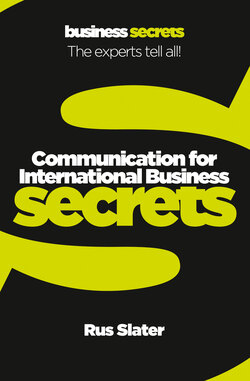Читать книгу Communication For International Business - Rus Slater - Страница 15
Оглавление2.1
KISS – Keep It Short and Simple
When you are communicating with people who are not native speakers of your own language, remember that in their heads they may have to translate every word you say. Then, once they have translated the words themselves, they have to analyse the meaning. This is not an easy process. It takes time.
Keep it short:
If I’m trying to translate what you just said, and at the same time you say something else, it can become very confusing.
I’ll probably miss one thing completely.
Or I might lose both!
So when speaking, keep your interjections short. Only cover one topic per ‘soundbite’.
Leave a pause for people to absorb what you have said.
Ask for confirmation that that part of the message has been understood.
“I didn’t have time to write a short letter, so I wrote a long one instead” Blaise Pascal (1623–62)
This is also good practice with written communication. Try to keep texts or emails to a single screen (bearing in mind that many people read their email on a smart phone, so a ‘screen’ may be only 50 or 60 words).
This will take more effort on your part; it is actually easier to ‘ramble’ than it is to be concise, so plan enough time to think about paring your communications down for the international audience.
Keep it simple:
This isn’t a matter of dumbing-down or being patronizing. However, try to use simpler words rather than longer or more complex ones; so for example:
| Use … | Instead of … |
| Make happen | Facilitate |
| Lose value | Depreciation |
| Belief | Paradigm |
| Combined effect | Synergy |
Short and simple is harder than long and freewheeling, but it is worth it in the long run.
